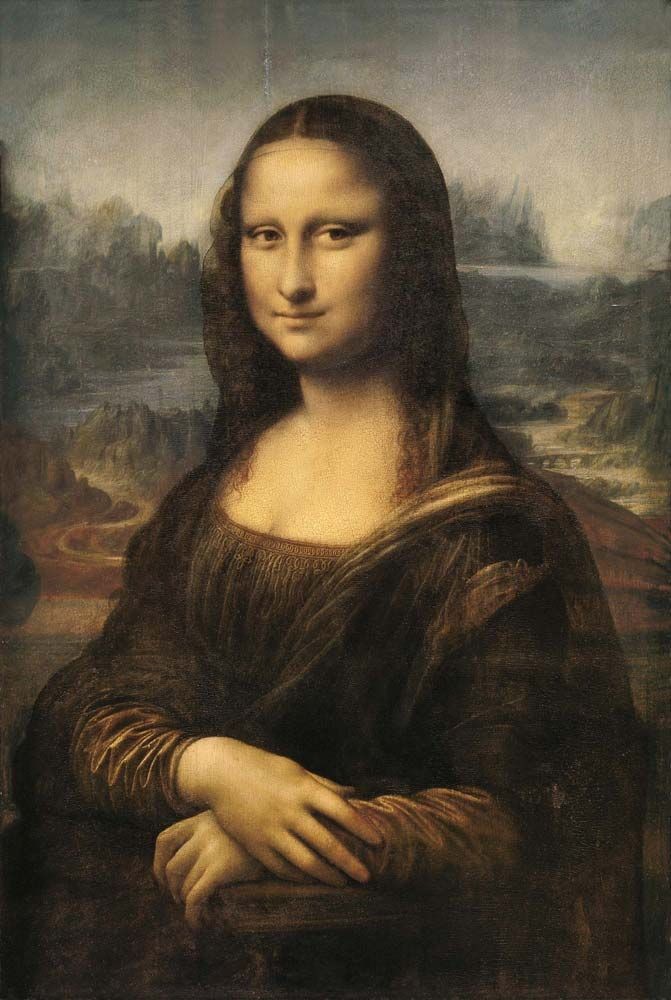Five centuries after Leonardo da Vinci meticulously crafted the Mona Lisa, this portrait, encased in bulletproof glass within the Louvre Museum, continues to magnetize throngs of visitors daily. It undeniably holds the title of the world’s most famous painting. Yet, for those who manage to steal a glance at this iconic artwork, a sense of bewilderment might arise. The subject is a woman of unassuming appearance, modestly adorned in a sheer veil, somber garments, and devoid of ornamentation. While her smile and gaze have been subjects of endless discussion, the question persists: what truly underpins the global fascination with the Mona Lisa? The enigma surrounding the sitter’s identity and her captivating expression intertwines with the very reasons for the painting’s unparalleled renown. While countless theories attempt to pinpoint a singular cause for its celebrity, the most convincing arguments propose that no single explanation suffices. The Mona Lisa’s fame is a tapestry woven from serendipitous circumstances, interwoven with the artwork’s inherent allure.
Masterful Artistry: Leonardo’s Genius and Innovative Techniques
The Mona Lisa is undeniably a painting of exceptional quality. Even as Leonardo labored over it, the artwork garnered significant admiration. His contemporaries were quick to emulate the then-novel three-quarter pose. Giorgio Vasari, the celebrated writer and artist, lauded Leonardo’s remarkable ability to replicate nature with unparalleled fidelity. Indeed, the Mona Lisa stands as a testament to realistic portraiture. The subject’s softly sculpted face exemplifies Leonardo’s masterful command of sfumato, an artistic technique employing delicate gradations of light and shadow to model form, revealing his profound understanding of underlying anatomy. The exquisitely rendered veil, the meticulously detailed tresses, and the careful depiction of draped fabric underscore Leonardo’s keen observation and unwavering patience. Furthermore, while the sitter’s steady gaze and subtle smile were not interpreted as enigmatic until the 19th century, modern viewers can appreciate the ambiguity of her expression. Leonardo painted a complex figure, mirroring the intricacies of human nature itself.
The Louvre’s Legacy: Location, Location, Location
However, many art scholars argue that the sheer artistic merit of the Mona Lisa, while substantial, is insufficient to account for its iconic status. There exist countless paintings of comparable quality, yet they do not command the same global recognition. External factors have played a crucial role in elevating the artwork’s fame. Its residence within the Louvre, one of the most frequented museums globally, is a significant circumstance that has amplified its stature. The painting’s journey to the Louvre was circuitous, beginning with Francis I, the King of France, in whose court Leonardo spent his final years. The Mona Lisa became part of the royal collection and remained secluded within French palaces for centuries until the French Revolution transformed the royal collection into public property. Following a brief period in Napoleon’s bedroom, the Mona Lisa was installed in the Louvre Museum at the dawn of the 19th century. As the Louvre’s popularity swelled, so did the painting’s recognition.
The Enigma of the Sitter: Mystery and Romanticism
The identity of the portrait’s subject soon became a source of increasing intrigue. While many scholars posit that the painting portrays Lisa Gherardini, the wife of Florentine merchant Francesco del Giocondo, concrete evidence of such a commission from Francesco remains elusive, and the sitter’s identity has never been definitively confirmed. This ambiguity has allowed individuals to project their own interpretations onto the figure. During the Romantic era of the 19th century, the image of a simple Florentine housewife transformed into that of a mysterious seductress. The French writer Théophile Gautier described her as an “enigmatic being…her gaze promising unknown pleasures,” while others elaborated on her treacherous lips and captivating smile. English author Walter Pater famously went so far as to characterize her as a vampire, stating she “has been dead many times, and learned the secrets of the grave.” The aura of mystery that enveloped the Mona Lisa in the 19th century continues to define the painting and fuel speculation.
Leonardo’s Myth: Genius and Renaissance Man
Concurrently, the 19th century witnessed the mythologization of Leonardo da Vinci as a universal genius. While he was well-regarded in the centuries following his death, he was not initially elevated above his esteemed contemporaries like Michelangelo and Raphael. However, as interest in the Renaissance period surged during the 19th century, Leonardo’s public image shifted. He became widely perceived not only as a master painter but also as a visionary scientist and inventor whose designs foreshadowed modern inventions. Although many of his purported inventions have since been debunked, and his contributions to science and architecture re-evaluated as modest, the myth of Leonardo as a polymath has persisted into the 21st century, further contributing to the Mona Lisa‘s iconic status.
The Drama of Theft: A Media Sensation
While 19th-century writers ignited public interest in the Mona Lisa, it was the painting’s theft in 1911 and the ensuing media frenzy that catapulted it to global prominence. When news of the audacious crime broke on August 22nd of that year, it sparked an immediate sensation. Crowds flocked to the Louvre to witness the void where the painting once hung. The museum’s director of paintings resigned, newspaper headlines screamed accusations of a hoax, and even Pablo Picasso was briefly apprehended as a suspect. Two years later, the painting resurfaced in Italy after a Florentine art dealer alerted authorities about a man attempting to sell it. The man was Vincenzo Peruggia, an Italian immigrant who had briefly worked at the Louvre, fitting protective glass on several paintings, including the Mona Lisa. Peruggia and two accomplices removed the portrait from the wall, concealed it overnight in a storage closet, and absconded with it the following morning. Unable to sell the painting due to the intense media coverage, Peruggia hid it in a false bottom of a trunk until his capture. He was tried, convicted, and imprisoned for the theft. The Mona Lisa, meanwhile, embarked on a tour of Italy before its triumphant return to the Louvre. By this time, many French citizens had come to regard the artwork as a cherished national treasure, lost and then miraculously recovered.
Artistic Reinterpretations and Pop Culture Icon
The Mona Lisa’s fame undeniably intensified after the heist, but World War I soon overshadowed global attention. Some scholars contend that Marcel Duchamp’s playful defacement of a postcard reproduction in 1919 reignited interest in the Mona Lisa, initiating a trend that would solidify its place as one of the most recognizable images worldwide. Duchamp challenged the veneration of art by adding a beard and mustache to the lady’s face and appending the acronym L.H.O.O.Q. (intended to evoke a vulgar French phrase) at the bottom. This act of irreverence triggered a minor scandal, and astute artists recognized the attention-grabbing potential of such provocations. For decades to follow, artists like Andy Warhol followed suit, reinterpreting the Mona Lisa in various styles. As artists distorted, reimagined, and played with reproductions of the Mona Lisa, cartoonists and advertisers further exaggerated her image. With advancements in technology, the painting was endlessly reproduced, sometimes faithfully, sometimes manipulated, ensuring that the sitter’s face became universally recognizable, even to those with limited interest in art.
Global Tours and Modern Celebrity Status
A tour of the painting to the United States in 1963 and to Japan in 1974 propelled it to unparalleled celebrity status. The Mona Lisa journeyed to the United States in a first-class cabin on an ocean liner, attracting approximately 40,000 visitors daily to the Metropolitan Museum in New York City and the National Gallery of Art in Washington, D.C., during its six-week sojourn. Similarly massive crowds greeted the portrait in Japan a decade later. Furthermore, as international travel became increasingly accessible in the late 20th century, more individuals gained the opportunity to visit Paris and pay homage to the Mona Lisa in person, contributing to the persistent crowds observed today.
Conclusion: A Symphony of Factors
While the Mona Lisa is undoubtedly a masterpiece of artistic creation, its enduring celebrity cannot be attributed to a single factor. Instead, it is the convergence of numerous circumstances—from its fortunate acquisition by the Louvre to the myth-making of the 19th century and the relentless reproductions of the 20th and 21st centuries—that have synergistically combined with the painting’s intrinsic appeal to establish the Mona Lisa as the most famous painting in the world. Its importance transcends mere artistic value; it is a cultural phenomenon, a captivating intersection of art history, chance, and enduring human fascination.

